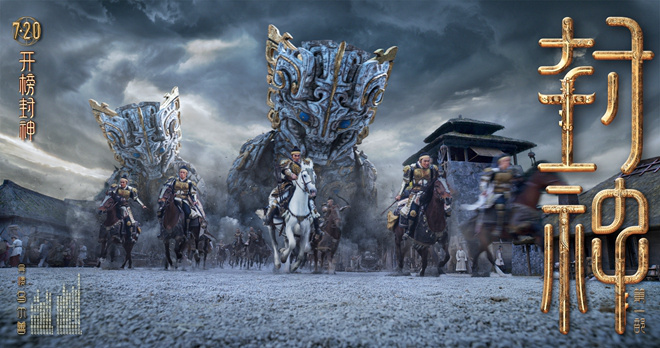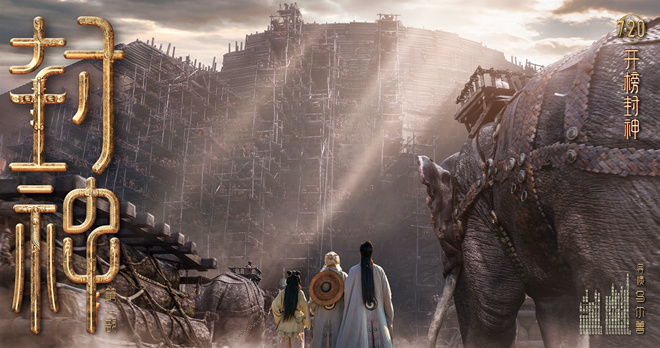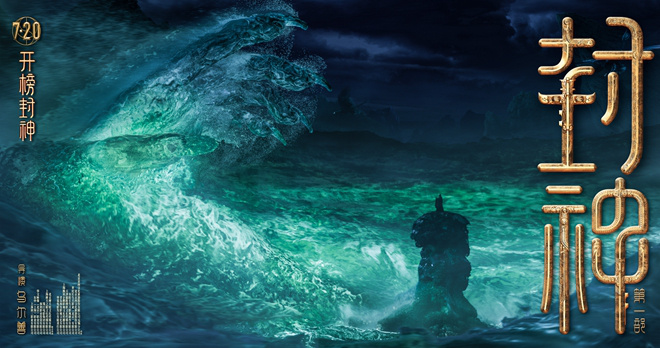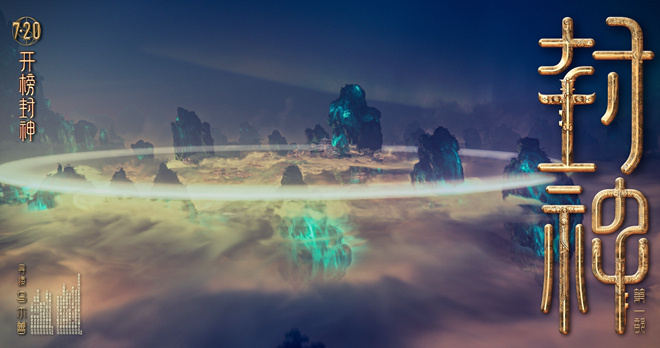The special feature of "Feng Shen I" exposed visual effects made China’s mythical imagination fall to the ground
1905 movie network news China’s first national myth epic film released a special visual feature, and the masters created a mirror to analyze the cooperation of artists from different departments in the visual workflow of the film, revealing four categories of visual shots: digital characters, digital creatures, cluster animation and mythical landscapes. Every frame is polished with ingenuity, and China’s original culture, aesthetics and world-class technical standards are adhered to, so that China’s mythological imagination can land perfectly. Directed by,,,,,,,,,,,, and starring, the film will be released nationwide on July 20, and is in the process of pre-sale. On July 18 and 19, the special effects halls of IMAX, CINITY and Dolby throughout the country will continue to be screened and shocked.

Extensive application of conceptual design and animation preview
Complement the missing departments of China film industry
The newly released visual effects feature focuses on the visual effects production of "Feng Shen I". Wu Ershan, the director, thinks that the most important bottleneck for China films is fantasy films. Therefore, the trilogy of deities is not only a pioneer of the genre of China’s mythical epic films, but also a push for the establishment and upgrading of the relevant film industry system, so as to explore more possibilities of China’s films.
The trilogy of deities has two characteristics in visual effects, namely, the workload is huge and the work is very difficult. There are more than 1700 visual effects shots in "Feng Shen I" alone, and the visual effects work takes nearly four years from preparation to completion. For this reason, director Wu Ershan specially set up a visual effect company, Meisi Image, hoping to perfectly combine China’s aesthetics and China’s creativity with the world’s most advanced film technology, and at the same time, to cultivate and find artists in different fields to make up for the missing departments in China’s film industry.

The first thing is conceptual design. At the end of the four seasons, three conceptual art teams, namely, Na Zhonghe Studio, Tian Heyan Studio in Xu Tianhua and conceptual artist Li Yunzhong, were invited to join the trilogy of deities. They contributed their own aesthetics and creativity to the conceptual design of characters, fantasy creatures, scenes, plot key frames and other aspects, which established the aesthetic foundation of China’s original film and provided the basis for visual effects production. Wu Yibei, a visual effects producer, revealed: "Before doing all the work, we will first have the conceptual design of this art, its atmosphere map and its key frames, and then we will imagine what it will look like in three-dimensional space from here."
Secondly, the story is visualized with lens language through animation preview, which is widely used in the trilogy of gods, among which the animation preview of the first part of gods was done for 125 minutes. In the view of director Wu Ershan, animation preview is necessary for the mythical epic type: "It provides a goal for each production department, what to do in the real shooting part, and the visual effects department should complete the creation of those scenes, special creatures and characters that the real shooting can’t complete." Making animation preview can not only solve the problems that may be encountered in on-site shooting in advance, but also let all departments clearly understand the corresponding work content, which plays an important role in improving work efficiency and is an important part of the film industry system.

Visual effects feature reveals four kinds of visual effects shots
Ingeniously implement China’s myth imagination
The film "The First Part of Gods" opened the prelude to the trilogy of Gods. The story is about the collusion between Yin Shou, the king of Shang Dynasty, and da ji, the fox demon, who was tyrannical and heartless, causing a scourge. Jiang Ziya, the immortal of Kunlun Mountain, went down the mountain with the "list of gods" to find a common master in the world to save the whole people. Ji Fa, the son of Xibohou, gradually discovered the true colors of Yin Shou, and turned out the song … …

The type of mythical epic determines that the trilogy of gods is bound to face great challenges in visual effects. The visual difficulty of "Feng Shen I" mainly focuses on four aspects. The first is the digital character Lei Zhenzi, which should not only maintain the aesthetic effect of China’s traditional modeling, but also convince the audience that this creature really exists. To this end, the visual effects team spent several months studying how Lei Zhenzi took off from the starting, static or jumping state, giving it a sense of reality. In performance, Lei Zhenzi’s motion capture actor Pengyi Han made a special trip to learn from the first Hollywood motion capture person for a week. Pengyi Han found that the most fundamental thing in dynamic capture performance is to return to the role itself. He designed a complete performance mode for Lei Zhenzi, and created all his action guides, his voice guides and thinking guides according to Lei Zhenzi’s "most important emotions and connections".

The second level are digital creatures such as Mo Qilin, Nine-tailed Fox, Dragon and Tiger, Gluttony, etc. Conceptual artists have studied their modeling principles, and then digital artists have made them biological, giving these digital creatures actions based on different kinds of animals in nature, so as to achieve realistic effects and convince the audience that they really exist in reality. Then there is the cluster animation, which is used to make war scenes with thousands of troops and horses. The people in Chaoge City welcome Yin Shoukai Xuan, and thousands of farmers build worship platforms and other mass scenes. Finally, there is the scenery in the mythical world, such as Kunlun Wonderland, which has spanned three or four years from research and development to production. The difficulty of visual effect production is not technology, but aesthetics. Ye Jintian, a production designer and styling director, revealed that in order to present the Kunlun Mountain imagined by China literati, he "read a lot of landscape paintings in the Song Dynasty, and put forward a realm of emptiness", and finally got inspiration from the green landscape painting "A Thousand Miles of Rivers and Mountains" in the Song Dynasty. I believe that every audience after watching the movie will be shocked by the grand mythological imagination and meticulous visual details. The dream of the 3,000-year-old myth has come true. Let us witness the rise of China myth together.
The film "Feng Shen Part I" will be released nationwide on July 20th, and it is in hot pre-sale.